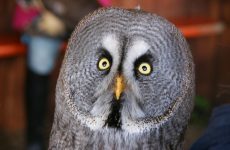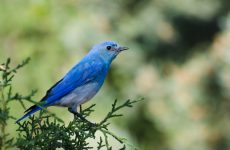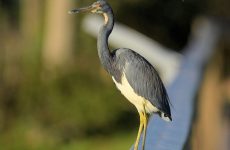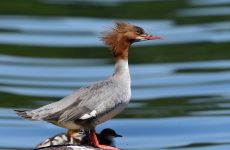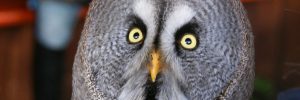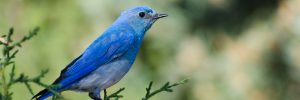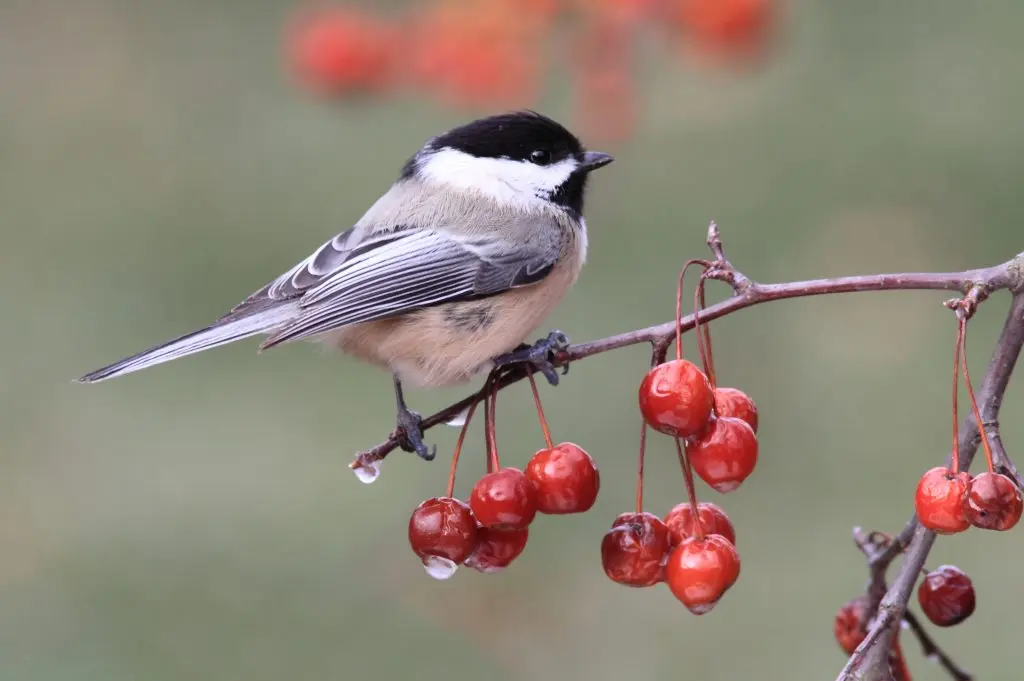
Chickadees are busy little songbirds that flit around looking for insects, and they will readily come to backyard feeders. They are part of the Poecile family of birds, and there are only seven species of chickadee, all of which live in North America.
In the Poecile genus, there are eight other species of birds called tits that live in Europe and Asia, such as the Willow tit or Marsh tit.
Chickadees do not migrate, but they may travel to lower ground in winter. To survive the cold winter months, studies have shown that Chickadees cache food, roost in cavities, and go into a state of regulated nocturnal hypothermia to save energy.
Male and female chickadees look the same, and so it can be difficult to tell them apart. Also, Black-capped Chickadees and Carolina Chickadees also look very similar, but the Black-capped has more white in the wing and has a 2-note song rather than a 4-note song of the Carolina.
Types of Chickadees
- Black-capped Chickadee
- Carolina Chickadee
- Mountain Chickadee
- Chestnut-backed Chickadee
- Boreal Chickadee
- Grey-headed Chickadee
- Mexican Chickadee
Chickadee Nests
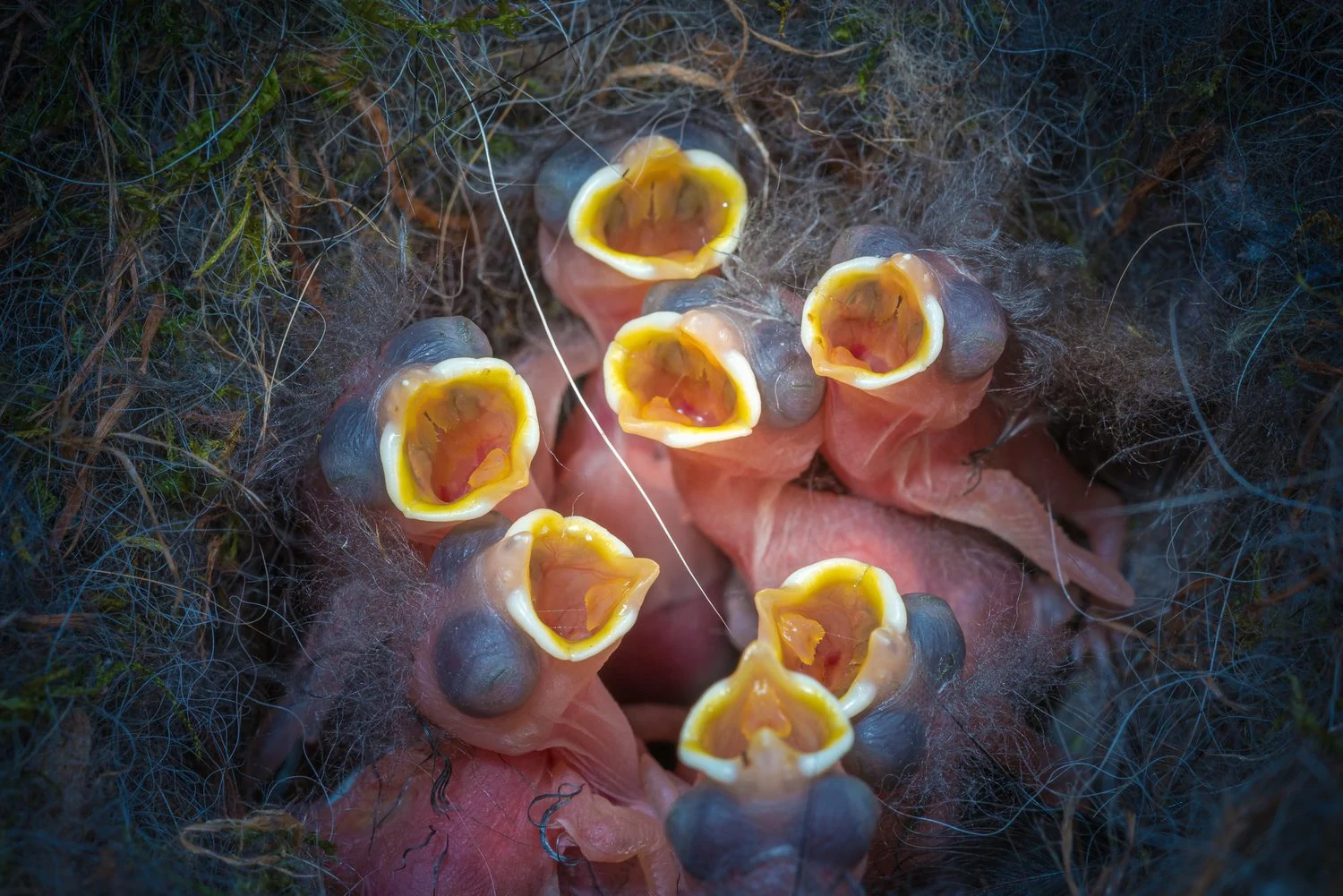
Chickadees nest in cavities in trees, either old woodpecker nests or holes they have made themselves in rotten wood. They will also use nest boxes. Chickadees don’t usually reuse a nest and only tend to have one brood a year.
The nest may be in the trunk of the tree or in thick branches. They line the cavity with softer material such as moss, animal hair, and feathers.
They lay a lot of eggs, often around ten, and they take about two weeks of incubation for the eggs to hatch. Male Chickadees feed the female while she incubates the eggs. Sometimes chickadees may cover the eggs with moss and other material to hide them from predators when they leave the nest.
The chicks remain in the nest for around two weeks before they are ready to fledge, but the parents will continue to feed them outside of the nest for another three to four weeks.
How Long Do Chickadee Live
Chickadees do not usually live very long, in fact only about two or three years, and they may only live for one year as an adult and so only have one breeding season. However, here have been chickadees recorded as living for twelve years.
Chickadee numbers are increasing as their habitat is improving with forest edges and due to backyard feeders and nest sites.
Predation from hawks, owls, and shrikes is the main cause of death for young chickadees, and nearly 80% of all egg and chick deaths is caused by predation.
Weather and accidents are also big causes of death for all chickadees. Cars, window strikes, pesticides, and cats are the main human-caused deaths of chickadees.
What Do Chickadees Eat
Chickadees eat insect eggs and larvae and ants, spiders, and some seeds. They usually forage for food around forest edges, and when food is abundant in the autumn, they will hide food in caches, often deeper in forests in sheltered areas.
Chickadees have an insatiable appetite due to their high body temperature and need to consume their own body weight in food each day!
Chickadees in Alaska have been shown in studies to store more food than chickadees in areas that have less harsh weather conditions. The areas of their brain for memory is also larger as they need to remember significantly more cache sites than chickadees further south.
You can attract chickadees to backyard feeders with black oil sunflower seeds, nyjer seeds, suet, or peanuts. They will feed on most types of feeders, including tube feeders, suet cages, or platform feeders.
7 Species Of Chickadee:
1. Black-capped Chickadee
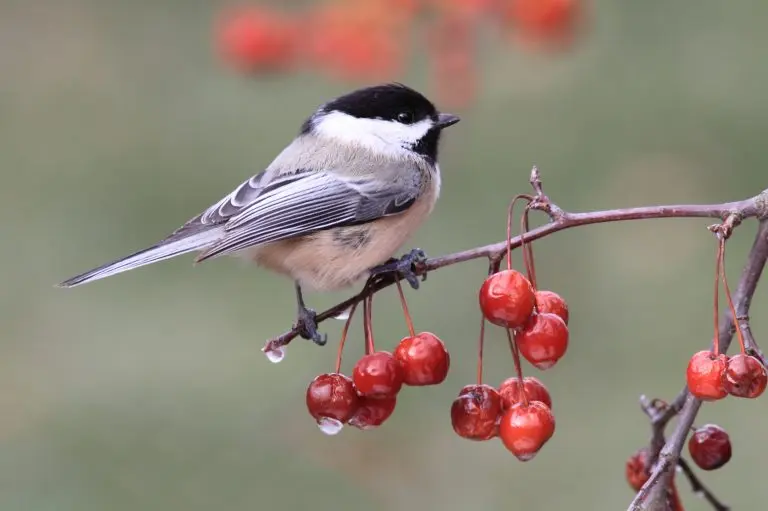
Black-capped Chickadees are cute birds with big round heads and tiny bodies. These birds will happily feed at backyard feeders and investigate everything, including you!
They have black caps, beaks, and throat, with white cheeks, and are gray on the back, wings, and tail. Their bellies are lighter. They look very similar to Carolina Chickadees.
- Poecile atricapillus
- Length: 4.7-5.9 in (12-15 cm)
- Weight: 0.3-0.5 oz (9-14 g)
- Wingspan: 6.3-8.3 in (16-21 cm)
Black-capped Chickadees do not migrate and can be spotted in the northern half of the US and Canada.
You can find Black-capped Chickadees in forests, open woods, and parks. They eat seeds, berries and insects, spiders, and suet.
Black-capped Chickadee Call/Song:
Nests of Black-capped Chickadees are usually in old woodpecker nests, but they may make their own cavity in rotten branches. Both the male and female will make the nest, and then the female lines it with moss and then other softer material such as fur.
They can lay a large clutch of up to thirteen eggs, which take around two weeks to hatch and a further two weeks for the young to leave the nest.
Attract Black-capped Chickadees to your backyard with suet, sunflower seeds, and peanuts or peanut butter. They will even feed from your hand and are often one of the first birds to discover new feeders. They will also use nest boxes, especially if you fill them with wood shavings.
Fun fact: Black-capped Chickadees’ brains are amazing in that each year they let old brain neurons die to lose old information they do not need and replace it with new neurons and information.
2. Carolina Chickadee
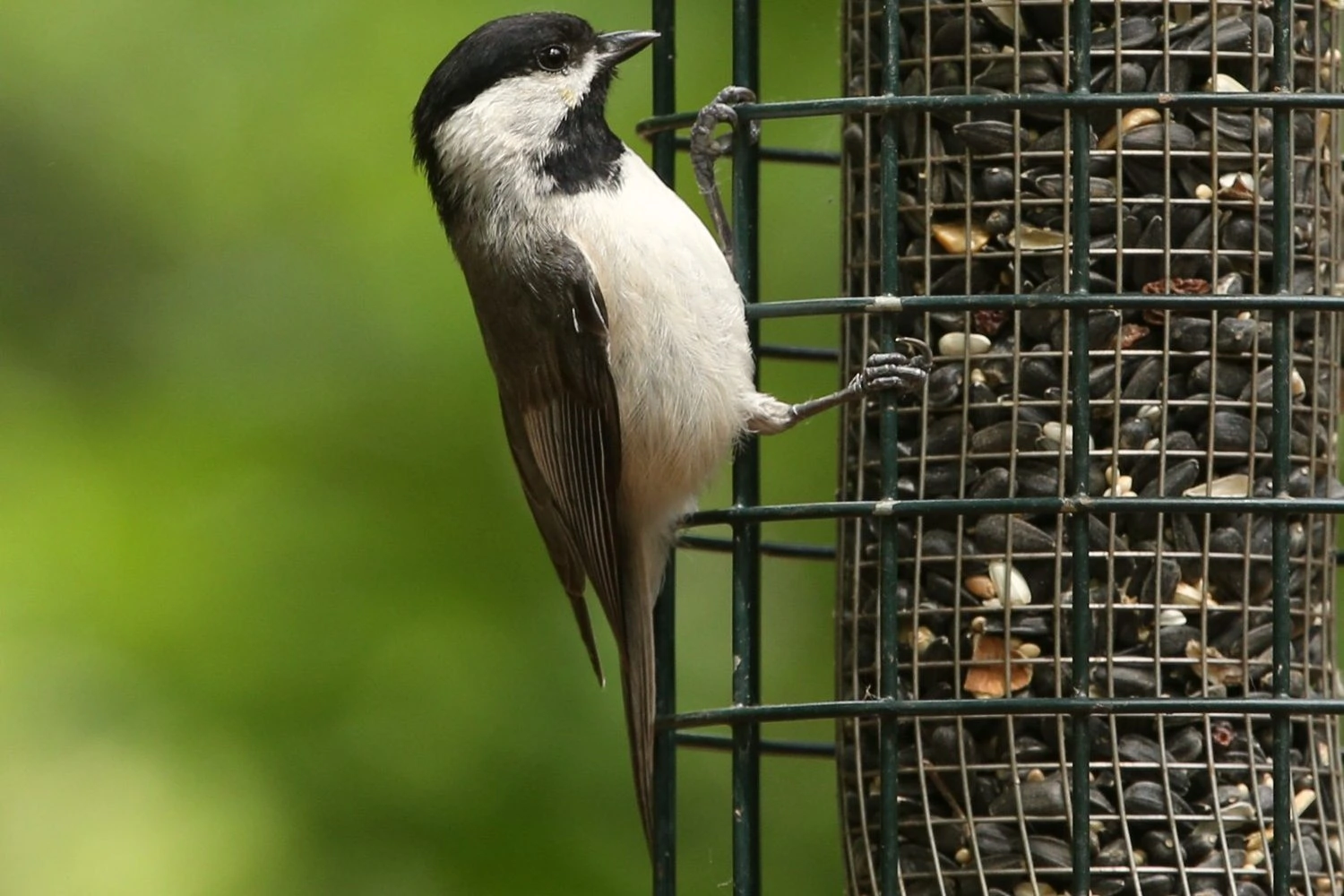
Carolina Chickadees are tiny birds with large heads, black caps and throats, white cheeks and bellies, and soft gray backs, wings, and tails.
They look very similar to the Black-capped Chickadee, and they interbreed where their range overlaps, but their range does not overlap in many places. Also, Black-capped Chickadees have more white in their wings than Carolina Chickadees.
- Poecile carolinensis
- Length: 3.9-4.7 in (10-12 cm)
- Weight: 0.3-0.4 oz (8-12 g)
- Wingspan: 5.9-7.9 in (15-20 cm)
Carolina Chickadees live in eastern and southeastern US states all year.
You can find Carolina Chickadees in forested areas, parks, and backyards. In summer, they mainly eat insects and spiders, but in winter, about half of their diet is plant material.
Carolina Chickadee Song:
Nests of Carolina Chickadees are in holes they have made themselves or those originally made by other species or natural cavities. They line the hole with moss and then softer material such as hair. They lay up to ten eggs which take about two weeks to hatch and a further two to three weeks for the young to leave the nest.
Attract Carolina Chickadees to your backyard feeders with black oil sunflower seeds, nyjer seeds, suet feeders, or peanuts. They will feed on most types of feeders, including tube feeders, suet cages, or platform feeders. They will also nest in nest boxes or nest tubes.
3. Mountain Chickadee
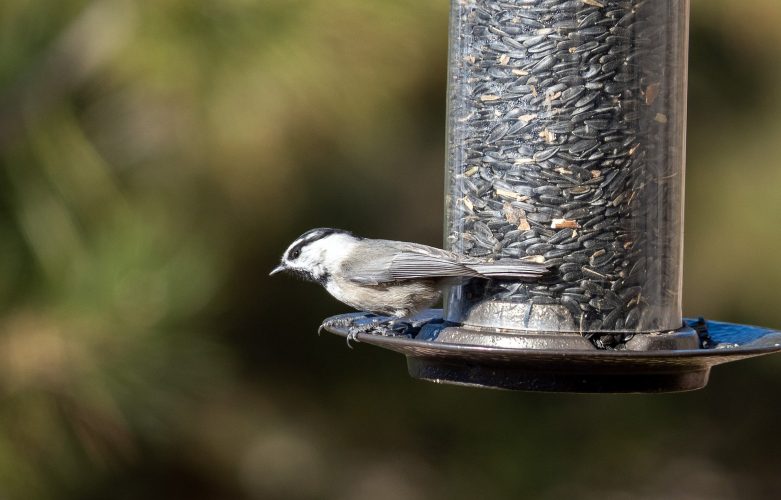
Mountain Chickadees are tiny birds with black-and-white heads and gray over the body, darker on the back and light gray underneath.
- Poecile gambeli
- Length: 4.3-5.5 in (11-14 cm)
- Weight: 0.4 oz (11 g)
Mountain Chickadees live in the mountains west of the US all year and do not migrate but may move down the mountain to lower areas in winter.
You can find Mountain Chickadees in evergreen forests, especially those with pine and conifers. They eat insects and spiders, nuts, and seeds and will often visit backyard feeders. Mountain Chickadees will often stash food for later and create a store of food.
Nests of Mountain Chickadees are usually in old nesting holes of woodpeckers and nuthatches. The female lines the cavity with fur and even covers her eggs when she leaves. They lay up to nine eggs, which take around two weeks to hatch and a further three weeks for the young to leave the nest.
Attract Mountain Chickadees to your yard by putting up nest boxes, and they will visit most types of feeders with black oil sunflower seeds, mealworms, nyjer, suet, and peanut butter.
Fun fact: The eggs of Mountain Chickadees are incubated 50% longer than other chickadee species, probably due to the protection that their old woodpecker nests give and the fact the female covers the eggs when she leaves.
4. Chestnut-backed Chickadee
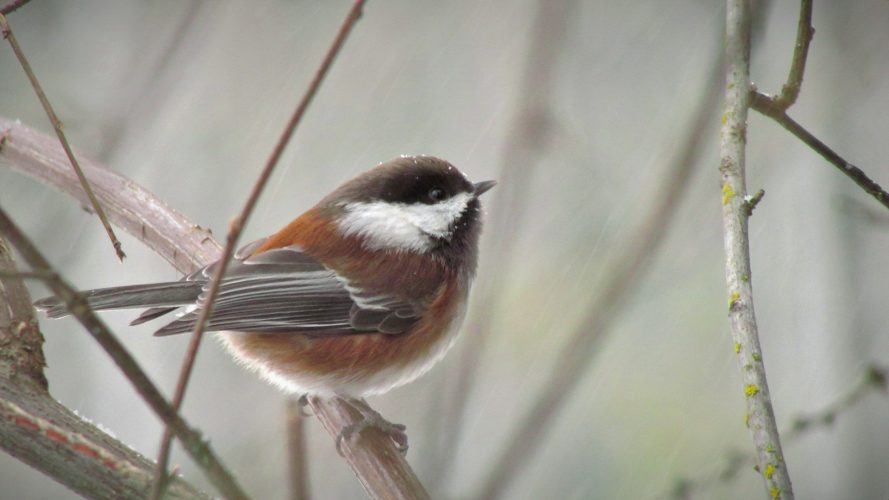
Chestnut-backed Chickadees are tiny birds with black caps and throats and white cheeks. They are a rich chestnut on their backs and sides and have gray wings and bellies. In California, their sides are gray instead of brown.
- Poecile rufescens
- Length: 3.9-4.7 in (10-12 cm)
- Weight: 0.3-0.4 oz (7-12 g)
- Wingspan: 7.5 in (19 cm)
Chestnut-backed Chickadees live flocks in wet evergreen forests along the Pacific Coast and are regular visitors to backyard feeders.
You can find Chestnut-backed Chickadees usually in conifer forests. They eat mostly insects, including caterpillars, spiders, wasps, and aphids, with seeds, berries, and fruit making up the rest.
Nests of Chestnut-backed Chickadees are usually holes in rotten wood made either by the birds themselves or they use old woodpecker nests. The nest is lined with moss and bark, and then softer material such as fur and grass is added. They lay up to eleven eggs, which take around two weeks to hatch and nearly three weeks for the young to leave the nest.
Attract Chestnut-backed Chickadees to your yard with black-oil sunflower seeds, suet, nyjer, peanuts, or mealworms in tube feeders, platform feeders, or suet cages. They will also use nest boxes.
5. Boreal Chickadee
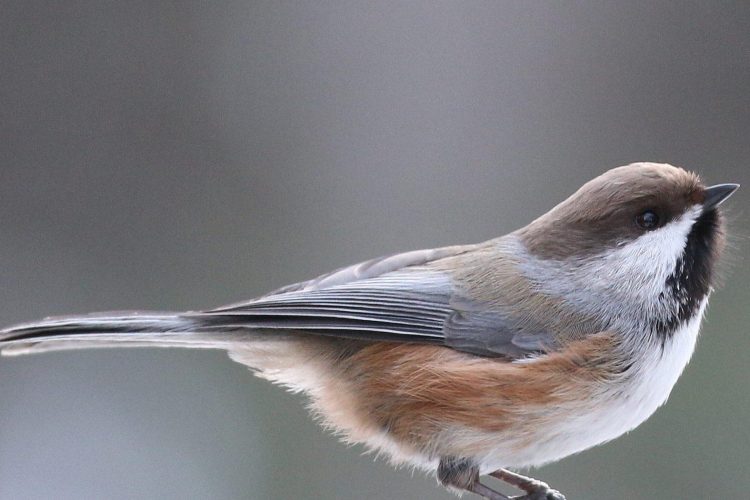
Boreal Chickadees are tiny grayish-brown songbirds with a dark brown cap, small black bib, cinnamon sides, and white underneath and on the cheeks.
- Poecile hudsonicus
- Length: 4.9-5.5 in (12.5-14 cm)
- Weight: 0.3-0.4 oz (7-12.4 g)
Boreal Chickadees live in Canada and Alaska and may appear in northern US states.
You can find Boreal Chickadees mostly in coniferous forests, often near water, but also can be found in deciduous or mixed forests. They feed on seeds and insects from the upper areas of the canopy and will readily visit feeders.
Nests of Boreal Chickadees are usually in dead trees, and the hole is made by the female. Moss and bark are used to line the cavity, and then softer material such as hair and feathers is added. They lay up to nine eggs, which take just over two weeks to hatch.
Attract Boreal Chickadees to your backyard with Black oil sunflower seeds, nyjer seeds, suet, peanuts, and mealworms on most types of feeders. Also, put up a nesting box to attract a mating pair.
Fun Fact: Boreal Chickadees will store seeds and insects for the long and harsh winter.
6. Grey-headed Chickadee
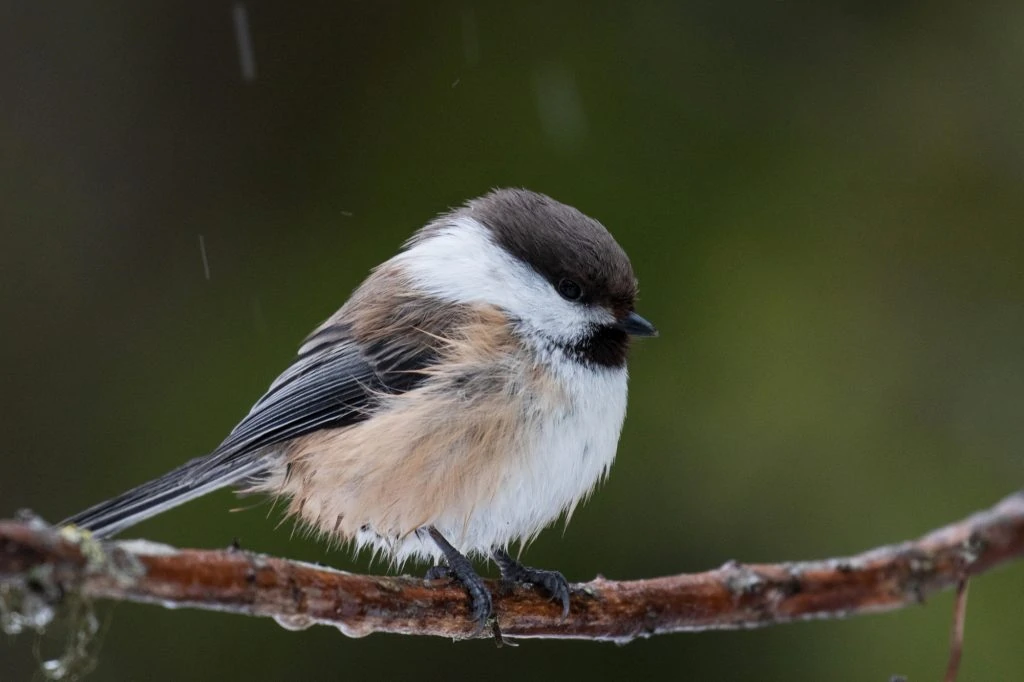
Grey-headed Chickadees have dark brown caps, black chin and eye stripe, and white cheeks. They have brown backs, dark grey wings streaked with white and pale brown sides.
- Poecile cinctus
- Length: (13.5 – 14 cm)
- Weight: (11 – 14.3 g)
Grey-headed Chickadees live in Alaska, northwestern Canada, and across northern Europe and do not migrate.
You can find Grey-headed Chickadees in arctic streamside thickets of willow and spruce. They are hard to find due to their remote locations. They eat insects, spiders, and seeds, and they will often store food for the winter.
Nests of Grey-headed Chickadees are usually holes in trees, often old woodpecker nests. They use moss and then animal hair to line the nest.
7. Mexican Chickadee
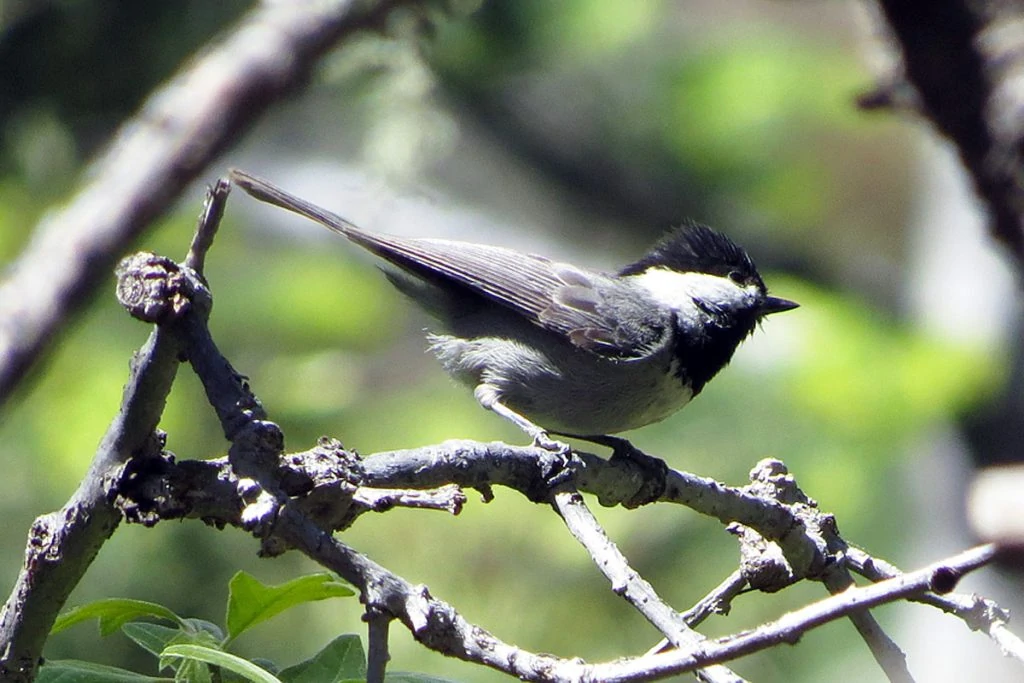
Mexican Chickadees have black caps, chins and throats, white cheeks, gray backs and sides, and pale gray undersides.
- Poecile sclateri
- Length: (12.5 – 13.5 cm)
- Weight: (7.5 – 11 g)
Mexican Chickadees live in Mexico and into southern Arizona and New Mexico, and they do not migrate.
You can find Mexican Chickadees in mountain conifer forests feeding mainly on insects from branches and leaves.
Nests of Mexican Chickadees are made in holes in trees and lined with moss and then animal hair. They lay up to nine eggs, and the female incubates the eggs while the male feeds her.
Fun Fact: Adults Mexican Chickadees leave crushed beetles outside nest entrances, which may help to stop predators with the chemicals they release.
Chickadee Songs and Calls
Chickadees are famous for the namesake chick a dee call, but this call is, in fact, a mild alarm call or contact call, and their song is actually a ‘fee bee’ sound.
Chickadee Sounds:
1. Fee-bee
- Is produced by males
- The first note is higher pitched than the second
- Males move away from other males when they sing
2. Faint Fee-bee
- Produced by both males and females
- Females use this to call the male to feed her when she is incubating
- Used between parents and young
3. Chick-a-dee call
- Mild alarm call
- Contact calls in flocks
- Coordinate movements in flocks
4. Gargle
- Series of two to nine short notes
- Used when birds get too close in flocks or at feeders
- It is a warning call before the chickadee may attack another to make them move further away
5. Begging Call
- Young chickadees make bee calls to get their parents to feed them
5. High Seet Call
Alarm Call when predators are around

